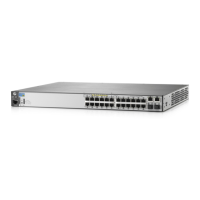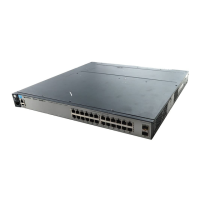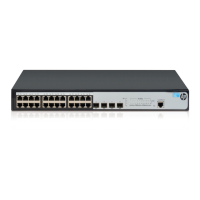2-29
Installing the Switch
Sample Network Topologies for Non-PoE+ Switches
Because the E2620 Switches have the Auto-MDIX feature, the connections
between the switches, and between the switch and end nodes or servers can
be through category 5 straight-through or crossover twisted-pair cable.
Category 3 or 4 cable can also be used if the connection is 10 Mbps only. In all
cases, the device ports must be configured to auto negotiate the link
characteristics for this feature to work.
The switch, in turn, can be connected to a network backbone through fiber-
optic cabling connected to a Gigabit-SX, -LX, or -LH mini-GBIC. Now, all the
devices on these network segments can access other network resources that
are connected elsewhere on the network backbone. Always remember when
connecting fiber-optics that all components match in specification.
Connecting to a Backbone Switch
Figure 2-22. Networking to a gigabit ethernet backbone
To Gigabit-Ethernet
backbone
E2620-48 Switch
E2620-48 Switch
Gigabit
fiber-optic cables
E5406 zl Switch
E2620-48 Switch
E2620-48 Switch

